Samsung 983 ZET SSD Review: Z-NAND Takes On Optane
Why you can trust Tom's Hardware
128KB Performance Results
Comparison Products
The 983 ZET is the fastest flash-based SSD we've had our hands on thus far, so we put it head-to-head against the fastest SSD we have tested yet, the 960GB Intel Optane SSD 905P. While this isn’t an actual enterprise SSD, its 3D XPoint memory allows for much faster than flash performance, and the usable capacity is the same.
We also included a 3.2TB Toshiba PX04 that comes outfitted with standard planar MLC NAND. It’s a bit older, but with its ability to crank out 700,000 IOPS, it’s a fairly powerful part. We also included a 1.2TB Intel DC P3520 that features Micron’s older 32-Layer 3D NAND and an 800GB Toshiba’s HK4E, a powerful and efficient SATA SSD.
128KB Sequential Read Performance









The 983 ZET SSDs deliver roughly 3.4GB/s of sequential read throughput. They reach this speed at a queue depth (QD) of 16 and outperform the other comparison drives at QD1–even the Intel Optane SSD 905P. In contrast, the Intel Optane SSD 905P maxes out at just under 2.7GB/s but offers more performance than the Z-NAND drives from QD 2-8.
The 983 ZET's latency is very low, too. Unlike SATA SSDs, these PCIe SSDs don’t experience a massive ramp in latency as the workload intensifies. Latencies stay under 5ms until the workload reaches QD128.
128KB Sequential Write Performance




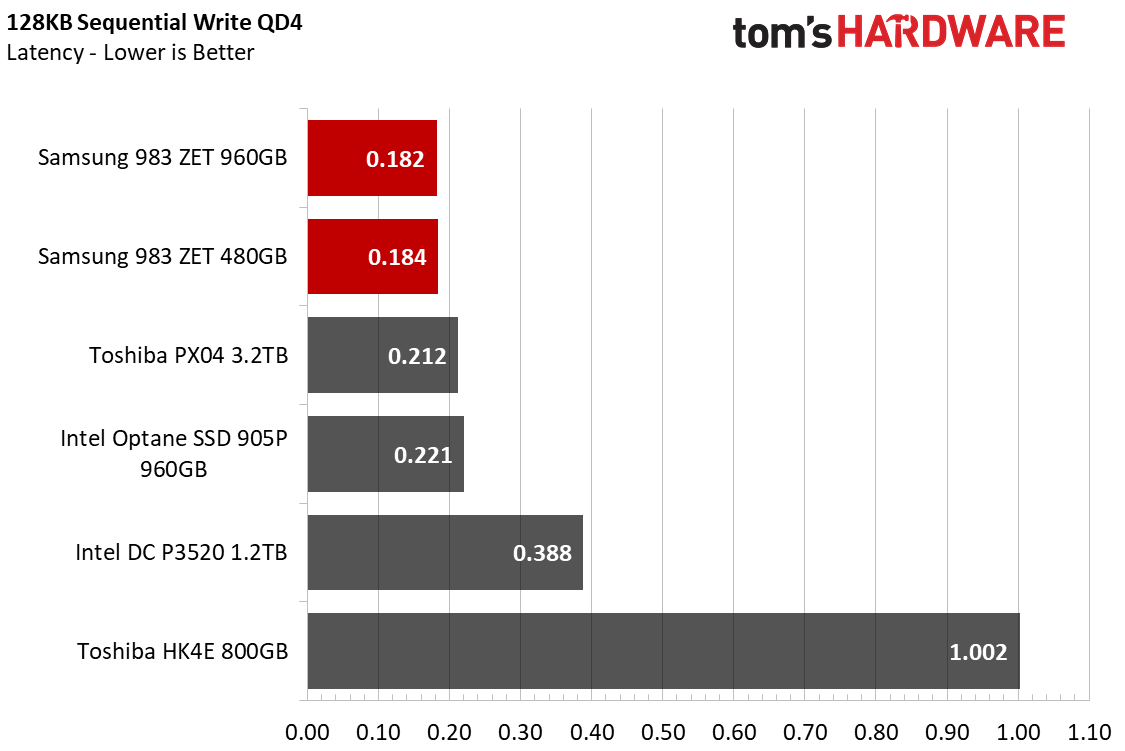




Like we saw in sequential reads, the 983 ZET offers some of the fastest performance in the comparison pool. Sequential write performance tops out at almost 2.9GB/s. This is a 400-500MB/s lead over the Toshiba PX04 and Intel Optane SSD 905P.
128KB Sequential Mixed Performance

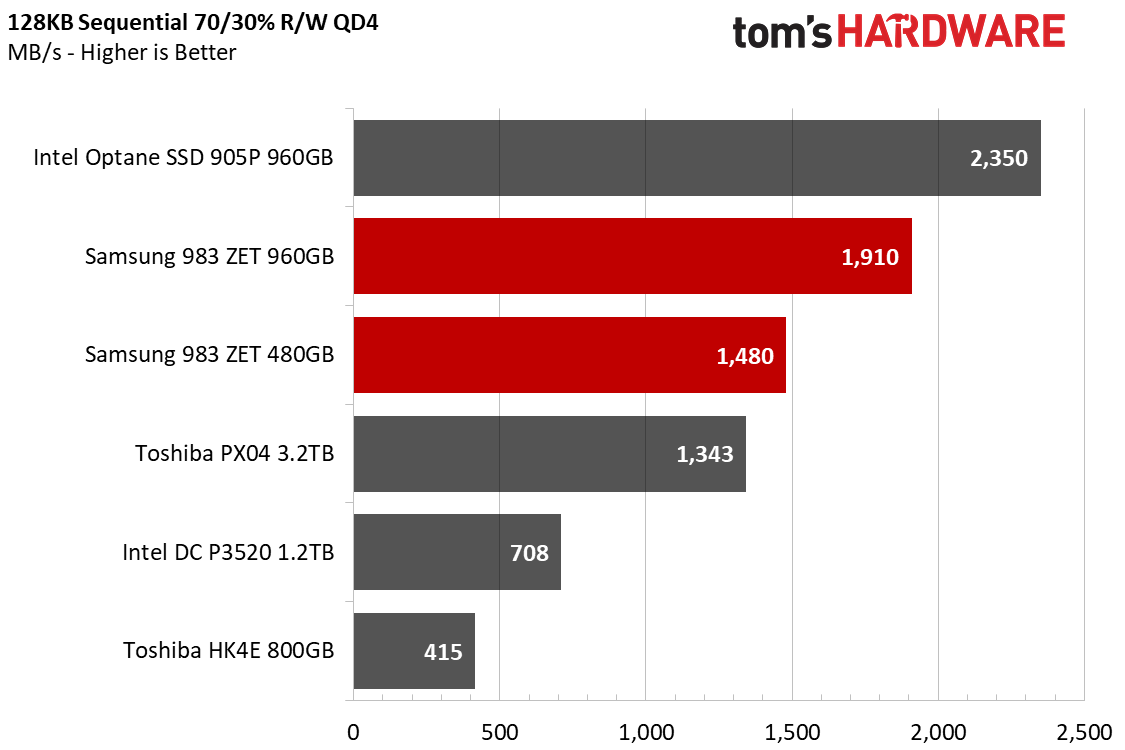
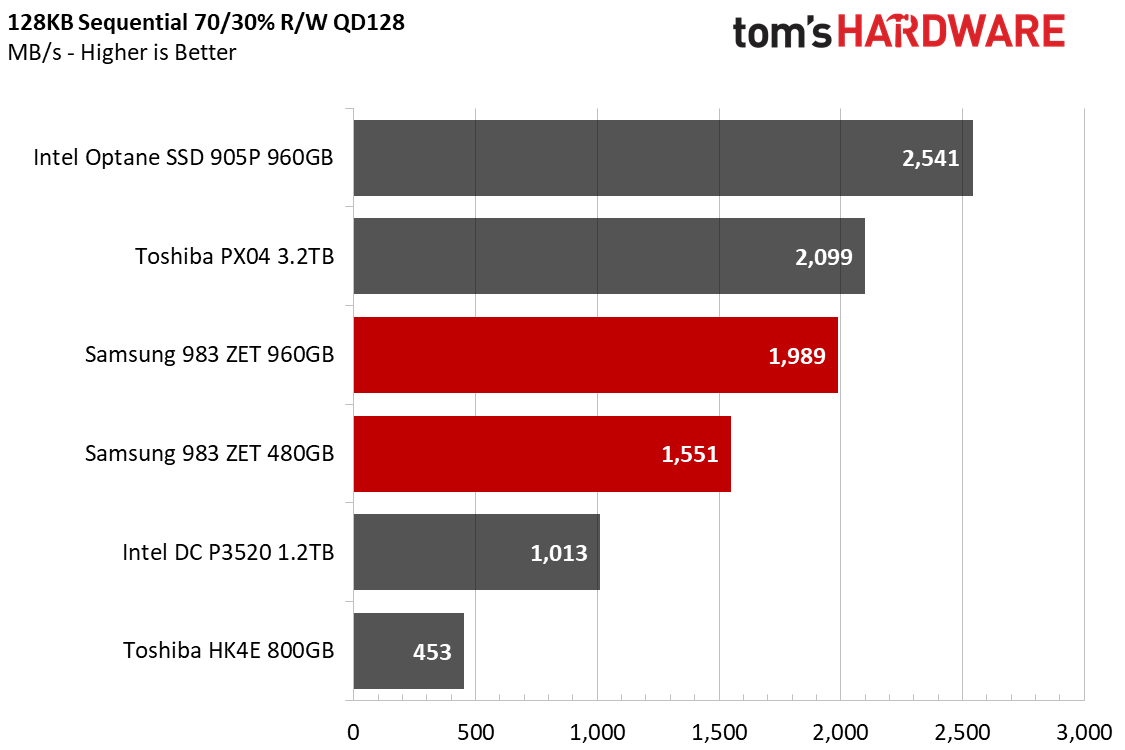
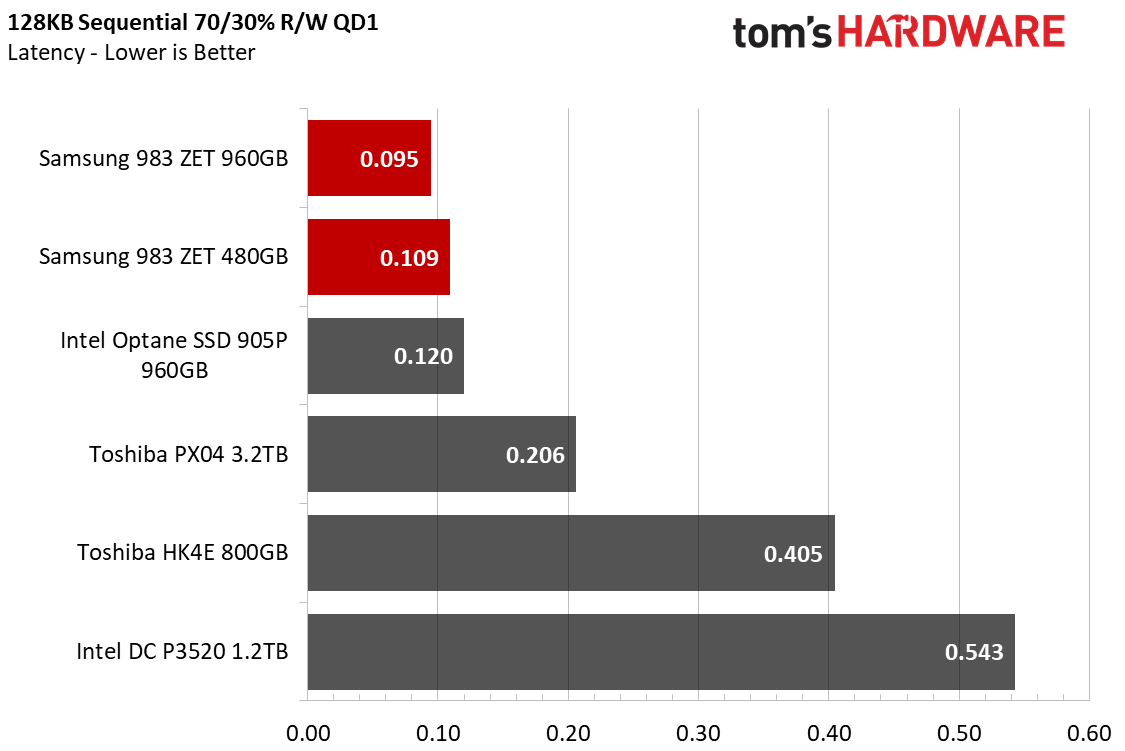
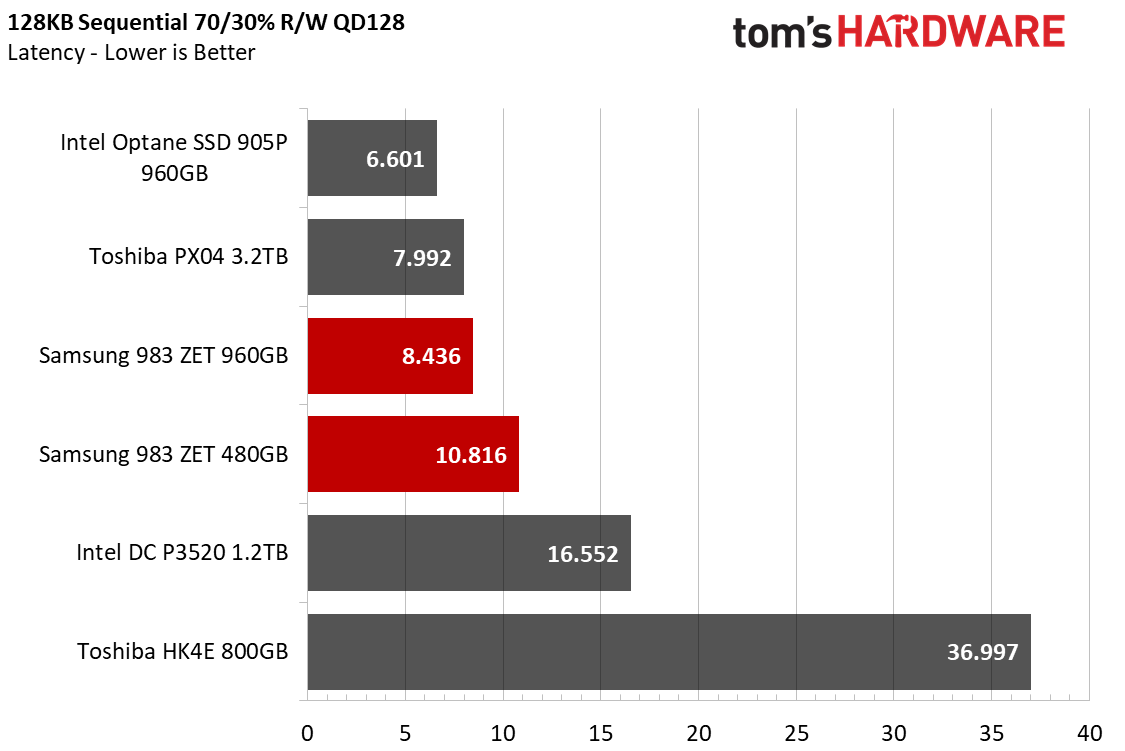



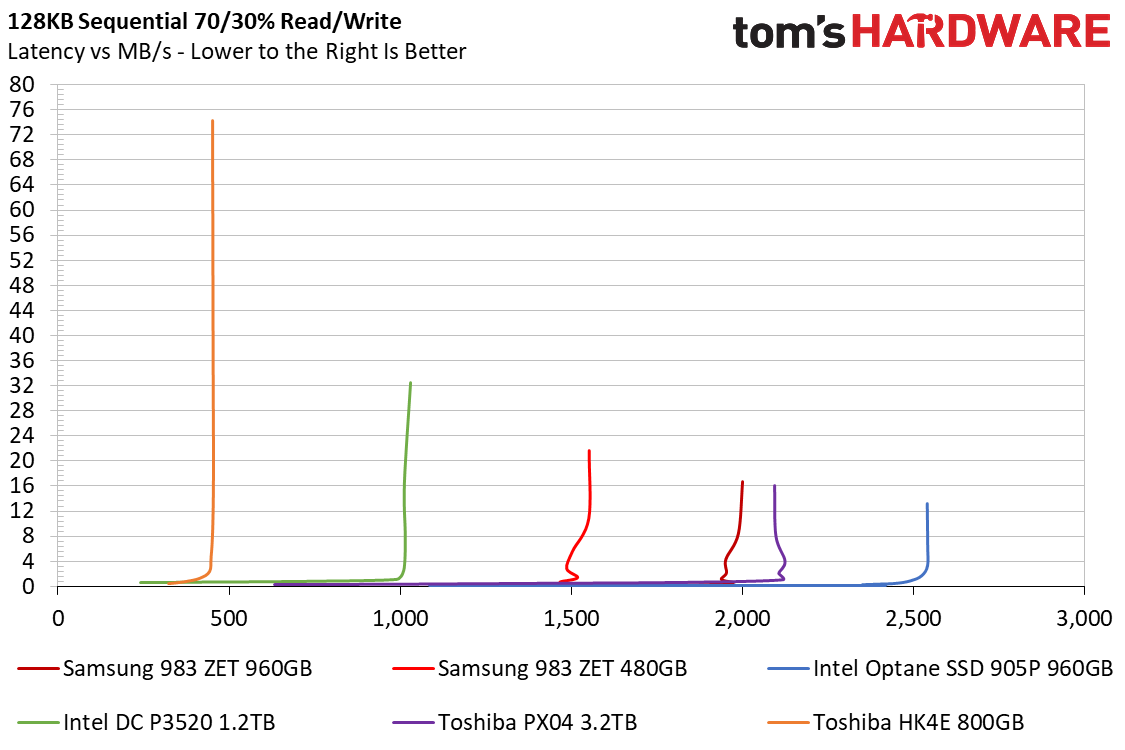

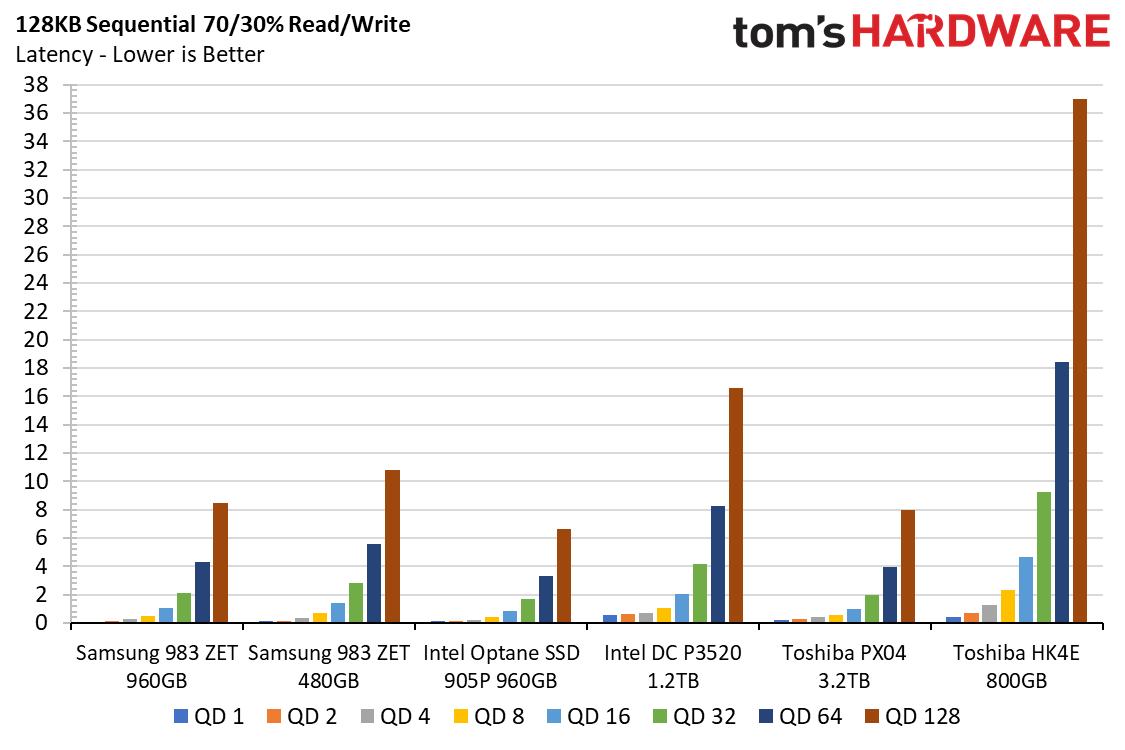
We can see that the Toshiba PX04 is a very powerful SSD, even for its older architecture, but it is more optimized for higher QD performance. In contrast, both of the Samsung 983 ZET SSDs offer great results at lower queue depths, where most workloads take place. But the power of the Intel Optane SSD 905P comes to light during mixed workloads. Regardless of the read/write mixture, the 905P delivers solid results with minimal performance variance.
128KB Sequential Power Consumption








Both the 480GB and 960GB models consume similar amounts of power. However, the 960GB model is faster than the 480GB model, so it has better efficiency metrics. During 100% read, write, and mixed workloads, both of our 983 ZET SDDs offer better power efficiency results than the other SSDs in the test pool, especially at lower QDs.
Get Tom's Hardware's best news and in-depth reviews, straight to your inbox.
MORE: Best SSDs
MORE: How We Test HDDs And SSDs
MORE: All SSD Content
Current page: 128KB Performance Results
Prev Page Super Low Latency with SLC Z-NAND Next Page 4KB Performance Results
Sean is a Contributing Editor at Tom’s Hardware US, covering storage hardware.


